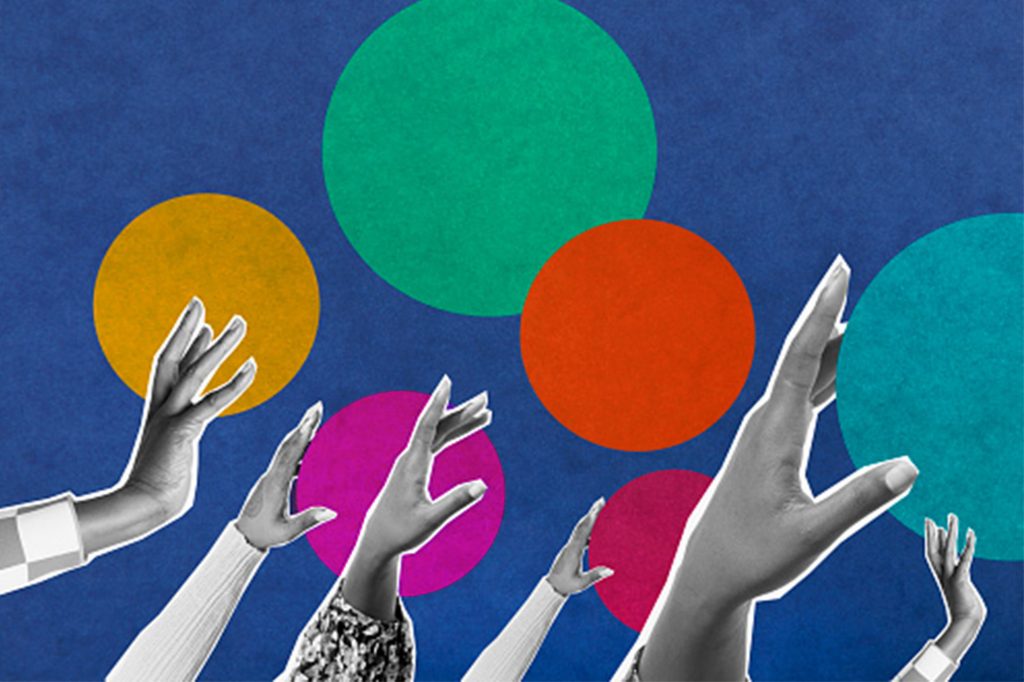Are relationships with brands real relationships?
And if not, how can brands adjust their approach using the science of relationships?
Jenny Madorsky is the Senior Vice President and General Manager at Long Dash. She has led operational and digital transformations in the private and public sectors for over a decade.
A condensed version of this article originally appeared in The Drum.
When working with clients, we often find ourselves in a conversation about how brands can build better relationships with their audiences, users, consumers, choose your favorite word for people who interact with the brand. There’s no shortage of points of view on this topic, with some arguing that building your brand as a relationship is a winning strategy. In our own messaging, we used to encourage brands to “build relationships that transcend any single product or transaction.” (Read on for why we chose to change this language.) What does “relationship” actually mean in this context? When we think about our relationships with our colleagues, friends, or family, it feels different from what we’re talking about in these conversations about brands. “Relationship” has become a word that’s repeated so often in business that it’s lost its meaning. So let’s get back to basics.
I consulted Don Rheem, CEO of E3 Solutions and former science advisor to Congress, to understand what a relationship really is, on a neurological level. “A relationship clinically is a safe and secure connection—one that’s defined by consistency and predictability,” says Rheem. He further explains, “If we look at the literature and couples therapy, the questions that the limbic system (the part of the brain that determines our felt sense of safety) is asking of the partner are: Are you there for me? Can I count on you? Do you have my back? If the answers are yes, the limbic system would say ‘Get closer to this person.’” When asked whether brands can form relationships like these with people, Rheem explains, “I’m not sure that we could find data that would empirically validate that. There has to be some reciprocity for a relationship to occur in the true clinical sense of it.”
The role that brands can play
With the neurological definition of a relationship in mind, it becomes clear that truly fulfilling relationships are only possible between people, not between a person and the abstract concept of a brand. So do we abandon the idea of building brands as relationships? Not necessarily. Relationships are vital to our collective well-being, especially in today’s loneliness epidemic, and brands can play a role in solving this issue.
Relationships are vital to our collective well-being, especially in today’s loneliness epidemic, and brands can play a role in solving this issue.
Rheem distinguishes that though brands may not form true relationships, they can nurture a sense of safety or connection. “The limbic system in the brain is hyper-vigilant for potential threats,” says Rheem, “so when brands convey, for example, a consistent and predictable experience, we feel safer with that brand and we are more likely to affiliate with it.” He further explains, “The leading criteria for success and survival for early homo-sapiens was being a part of a clan or tribe, Rheem says, “and as a result of that imperative, we are hardwired at birth to be in a group. Since our survival depended on staying in the group, we craved feedback. This is why we all wake up every morning subconsciously in search of validation. Do you see me? Do you know and appreciate me? Do you have a sense of who I am and my value? That connection—simply being part of something—still drives most of human behavior. When you wear a product or identify with a brand, you’re sending a signal to people: ‘I’m a part of this group.’ Just think about how strongly many people associate with being either an iPhone or an Android user. We feel validated simply by our affiliation with it, and with other members of that ‘tribe.’”
Build relationships between people, not brands
Imagine if brand leaders focused less on building tenuous “relationships” between brands and people, and instead focused on how their brands could use their connection power to support, encourage, and enhance relationships between people.
Sign up for OnBrand
Our weekly digest featuring ideas on the future of brand.
Glossier has successfully used this strategy—encouraging conversation, connection, and mutual knowledge-sharing among its consumers on platforms like Slack and Reddit and at in-person events. As a business, Glossier is rewarded with user-generated content (on Instagram, UGC makes up 33% of Glossier’s in-feed posts and almost half, 42%, of Glossier’s TikTok posts), and sales growing nearly 300% in previous years. Where Glossier missed the mark is giving relationships between business leaders and employees less attention and care than they did with consumers.
Salesforce has also long taken this approach, resulting in incredible growth. Though Salesforce traditionally sells B2B software, it’s taken commendable care to nurture communities of developers, administrators, and business leaders through training initiatives like Trailhead and events like Dreamforce, forming entire career paths around its suite of tools. Trailblazers, as its community members are called, can’t wait to go to Dreamforce each year not only to find out about new product features, but also to connect with, learn from, and validate each other.
So next time we find ourselves in a conversation about how brands can build better relationships, let’s pause to unpack what we mean. If relationships are really the goal, brands would be better served by helping people build better relationships with people. Let’s talk about brand as instigator, facilitator, and enhancer of relationships, not brand as relationship itself.





